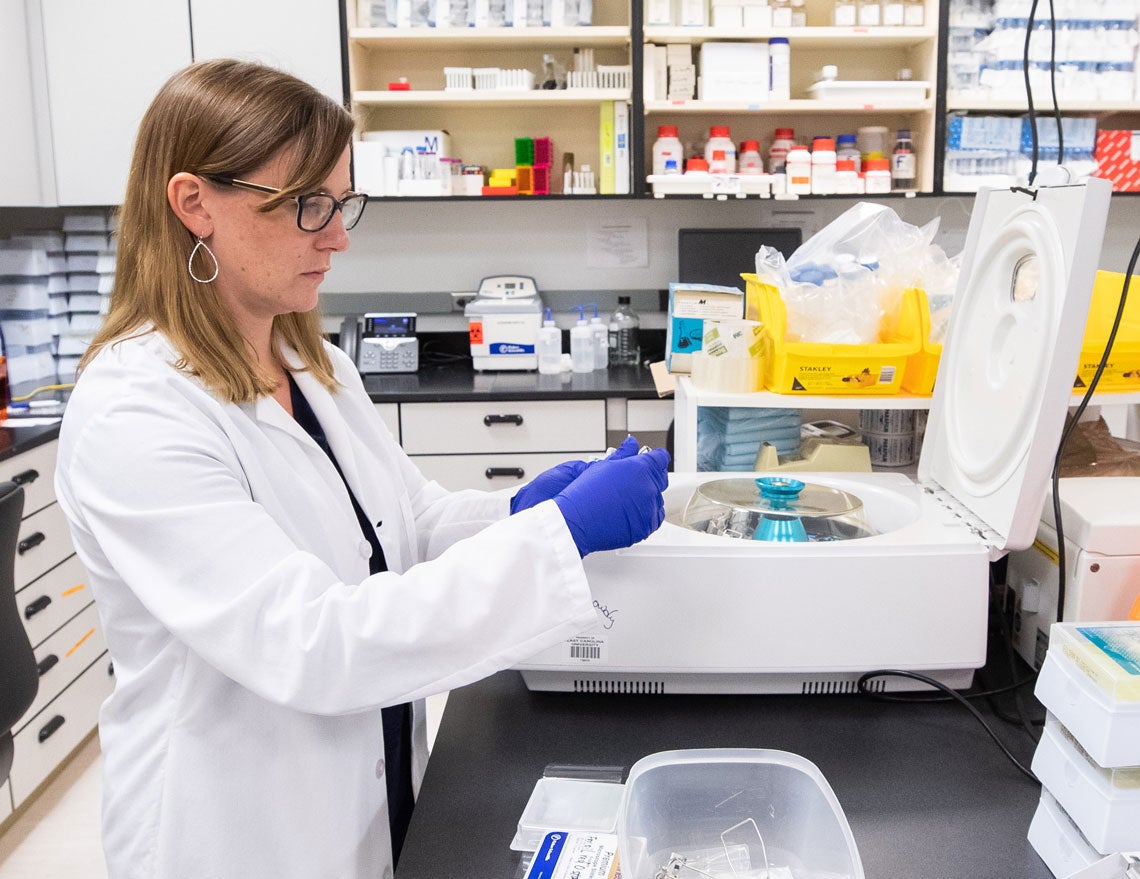OZONE EXPOSURE
Project examines link between pollution, respiratory problems
Ground-level air pollution can cause a variety of health problems, and East Carolina University’s Dr. Kym Gowdy is taking a closer look at how and why. Her work, for which she has received a five-year, $2.5 million grant from the National Institutes of Health, could eventually help decrease the frequency of respiratory infections like pneumonia.
“We know that when there are periods of high air pollution, people who are more exposed to that pollution are more susceptible to respiratory infections,” Gowdy said. “There are more hospitalizations for pneumonia around those times, and pneumonia is a huge concern to the U.S. and also other countries because we don’t have the best drugs to treat pneumonia, and some of our outcomes are pretty poor.”

Gowdy is working to pinpoint the role of ozone exposure in respiratory infection.
The focus of Gowdy’s work in the Brody School of Medicine’s Department of Pharmacology and Toxicology is on the mechanisms by which environmental exposures can lead to diseases of the lungs, cardiovascular system and immune system. Her current project centers on ozone, a criteria air pollutant present in low concentrations throughout the ground-level atmosphere. As ozone levels increase due to rising temperatures, increasing vehicle traffic and other factors, it can damage mucous and respiratory tissues.
More than one third of the U.S. population lives in areas exceeding regulatory standards for ozone, according to the grant summary. While it has been shown to impact immune system response, the specific mechanisms and reasons remain poorly understood.
“We have found that after … ozone exposure, we can detect red blood cell products in the lung, specifically hemoglobin,” she said. “What that hemoglobin can actually do, if it’s not cleared properly, is it can impair your immune system. Therefore your immune system can’t fight off these respiratory pathogens as well.”
Using both animal models and human samples provided by Dr. Robert Tighe, assistant professor of medicine at Duke University School of Medicine, Gowdy’s lab is studying how immune cells can handle pathogens before and after ozone exposure. Also working with Gowdy at ECU is Dr. Sky Reece, research assistant professor.
Gowdy came to ECU in 2014 and has been recognized by the American Association of Immunologists with both a Young Investigator Award and a Travel for Techniques Award. Her project was recognized by the NIH as the top priority for funding in its study section.
“If you look at the outcomes for pneumonia, especially for your susceptible populations, like the elderly and young children, we really — besides antibiotics — haven’t made good advances in how to treat them in the last 40 or 50 years,” she said. “This could at least give us a biomarker for understanding if there are certain patients who are going to succumb to pneumonia, more so than another population.”
Ozone concentrations are highest in more populated areas with high levels of traffic and industrial sources. Since it is formed by the interaction of sunlight with those emissions, levels can increase during hot weather. Gowdy said people susceptible to respiratory infections should try to avoid exposure.
“Just keep an eye on the air quality, and if you are someone who has a pre-existing lung disease or even cardiovascular disease, try to limit exposure outside when there are high levels of ozone in the atmosphere,” she said.

Dr. Kym Gowdy loads samples into a centrifuge.
